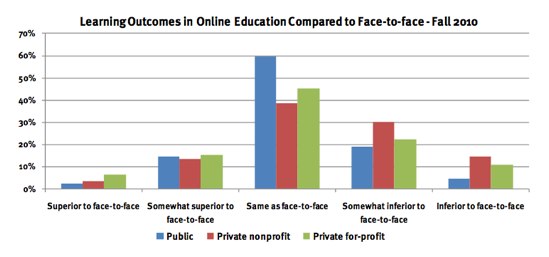Not surprisingly, the economic downturn has caused an increased demand for college courses, as many people are opting to go (back) to school. But the 2010 Sloan Survey of Online Learning finds that while about half the 2,500 colleges and universities reported an increase in demand for face-to-face classes, institutions report a far greater demand for online courses. Almost three-quarters of the institutions responding to the survey said that they'd seen an increased demand for online courses during the 2009 academic year.
This demand has caused enrollment in online classes to rise by almost 1 million students, the largest ever year-to-year increase. Nearly 30% of university students now take at least one course online -- over 5.6 million students. And the growth rate for online enrollment (21%) far exceeds the less than 2% growth rate for the overall higher ed student population.
While this may be good news for proponents of e-learning, the increased demand does put pressure on schools that may be already facing budgetary constraints. And to add to that, schools now face increased competition, not just from other public and private institutions, but from for-profit colleges. But 63% of those responding to the Sloan Survey now say that online learning is a critical part of their institution's long-term strategy.
Nevertheless one-third of respondents still see online learning as inferior to face-to-face instruction. The Sloan Survey has been tracking online learning for the past 8 years, and while enrollments are way up, some of the attitudes towards e-learning have not changed much. As public universities have been at the leading edge of e-learning adoption, it's not surprising that these schools have the highest confidence in the success of online learning. Over 76% of public colleges and universities responded that online is as good as or better than face-to-face instruction, as compared to only 55% of private schools and 67% of for-profit institutions.
